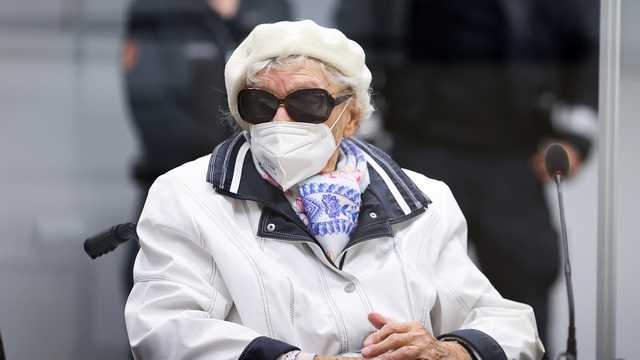
97-year-old Irmgard Furchner has been convicted for the role she played in the murder of 10,505 people during the Holocaust of the Jews, which took place during the Second World War.
Irmgard was a typist and secretary at the Stutthof concentration camp in Gdansk in modern-day Poland. She worked for two years, from 1943 to 1945. Although she was not confirmed to be directly involved in any of the killings, the court could not find any reason to acquit and discharge her because her job aided the killing of the prisoners. She has been nicknamed the “Secretary of evil.”
The court said she aided “those in a position of responsibility at the former Stutthof concentration camp with the systematic killing of those imprisoned there, due to her work as a shorthand typist/secretary in the Camp Commandant’s Office between June 1943 and April 1945.”
What if she was not aware of the killings?
During the trial, the defence lawyers argued that Irmgard was unaware of the murders because she was a secretary. They argued that there was no evidence that the old lady was aware of the systematic killings that took place in the camp.
For the benefit of doubts, the judges handling the case visited the former Stutthof camp to see the location of Irmgard’s office and examine the possibility that she was unaware of the unprecedented murders.
After a careful study of the case, the judges said it was “beyond imagination” that the former Secretary was unaware of the killings.
“During her time at Stutthof, the defendant did not remain unaware of what was happening there,” Dominik Groß, the presiding judge, said.
Apart from the judges, legal experts and survivors of the camp’s atrocities argued that the former secretary’s defence was dead on arrival as the extent of killings was too much for anyone not to notice.
Most people apart from the judges that visited the former camp entered the secretary’s office and confirmed that it was impossible for anyone not to know what was going on inside the facility.
“It was impossible not to know what happened. Manfred Goldberg, a survivor of the Stutthof camp, told Sky News. “There were bodies being carted openly through the camp.”
“I’m sorry for everything,” Irmgard said
Irmgard remained silent almost throughout the trial. At one point, she attempted to flee the old people’s home where she was living in an attempt to evade the trial. All efforts to get the 97-year-old to speak on the allegations failed, as she was unwilling to talk. However, in the end, she broke her silence with a very short sentence.
“I’m sorry for everything that happened. I regret that I was in Stutthof at the time. I can’t say anything else,” Irmgard Furchner said.
A juvenile Court limits justice
It is difficult to believe that a person involved in the murder of over 10,000 people would get only a two-year sentence. Unfortunately or fortunately, that is the maximum time the former secretary could get because she was 18 at the time the crimes were committed.
Although prosecutors would prefer a longer sentence, their hands were tied because a suspended juvenile sentence of two years was the longest possible punishment she could face.
“It’s the best sentence that we could have gotten because she’s being tried in a juvenile court. That’s part of the problem here,” Efraim Zuroff, the director of the Simon Wiesenthal Center in Israel, said.
“In a certain respect, the suspended sentence is absolutely absurd because the suspended sentence means that sentence will only be implemented if the person repeats the crime. Obviously, she’s not about to repeat the crime.”
The decision means Furchner will face a two-year probation, and if she commits the same crime again, she will be unable to avoid imprisonment. For now, there is a two-year probation, and since she can’t repeat the crime, she will not be sent to prison. But the law is law, and it has to adhere to, no matter the crime.
What the Stutthof camp looks like
The Stutthof camp was one of the most deadly places on earth during the Second World War. More than 60,000 people are said to have died in the camp.
“Conditions in the camp were brutal. Many prisoners died in typhus epidemics that swept the camp in the winter of 1942 and again in 1944,” the US Holocaust Museum wrote. “Camp doctors also killed sick or injured prisoners in the infirmary with lethal injections.”
An estimated 100,000 people were taken to the Stutthof camp during the war. Despite the harsh treatment, the electrified barbed-wire fence was enough to stop them from fleeing. The prisoners were compelled to engage in difficult work, and prisoners too weak to work or sick were killed by the guards.
During the last days of the camp, about 50,000 prisoners were transferred to other camps after they were convinced that their liberation was here. However, with the Soviets closing in, the evacuation attempt led to the deaths of 1 in 2 prisoners died.
“It has been estimated that over 25,000 prisoners, one in two, died during the evacuation from Stutthof and its subcamps,” the US Holocaust Museum wrote






0 Comments